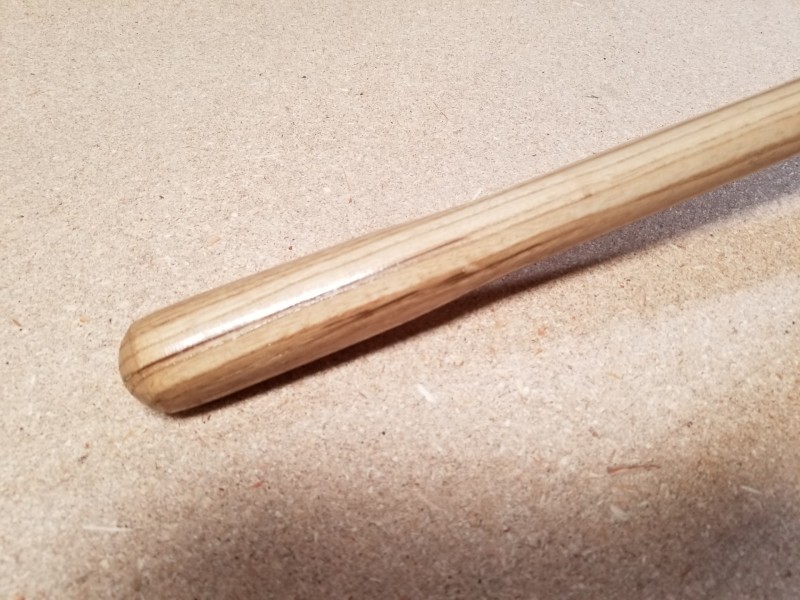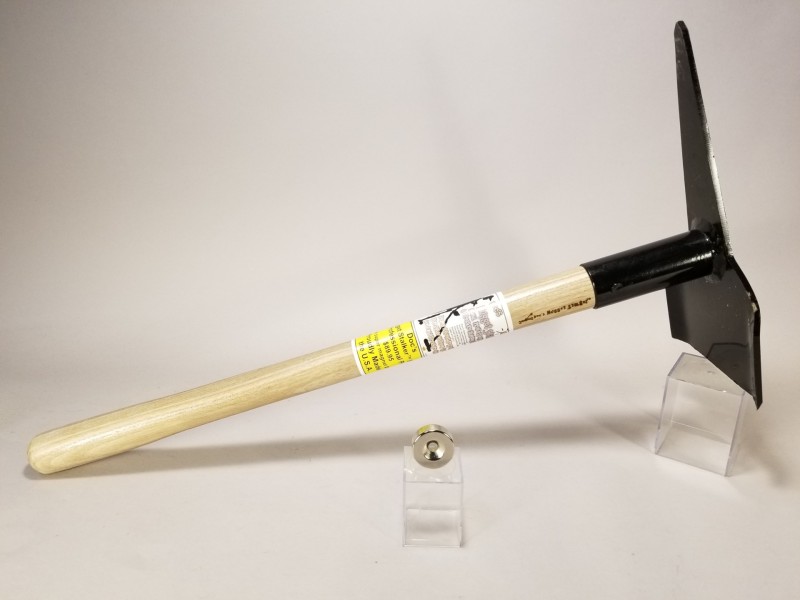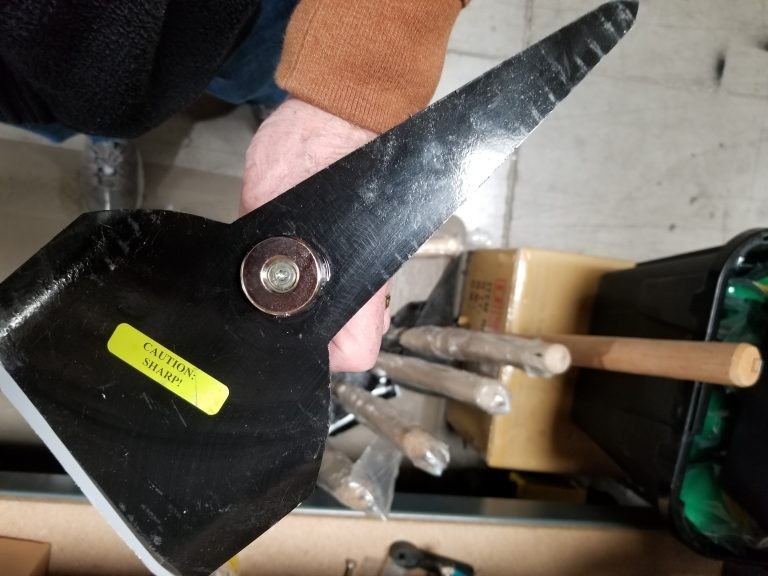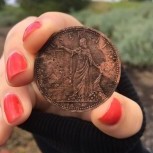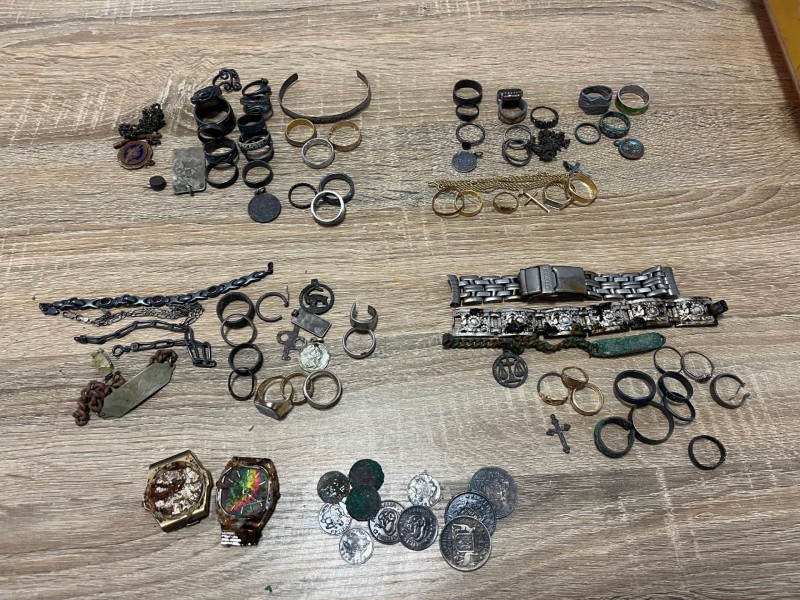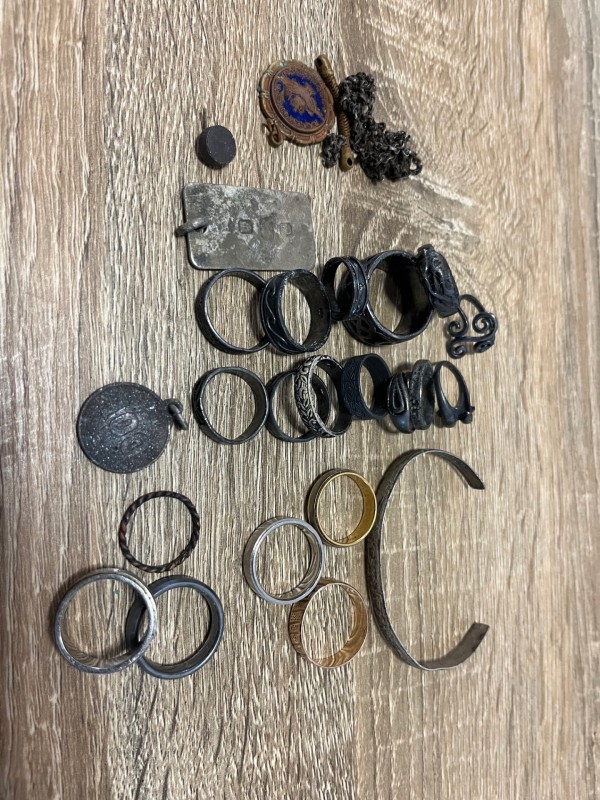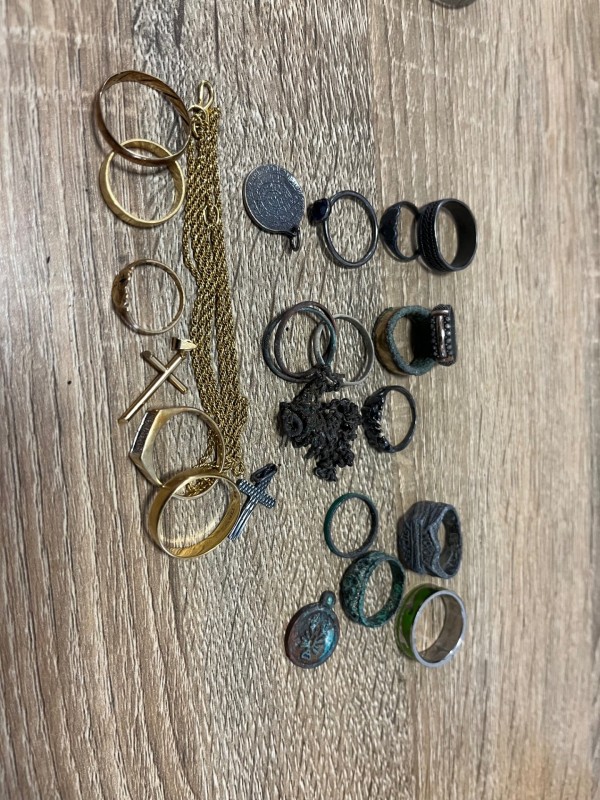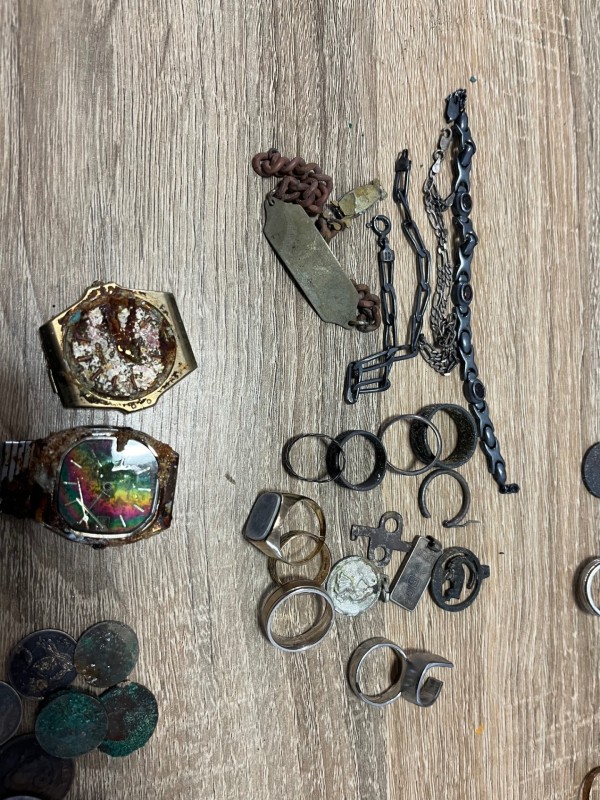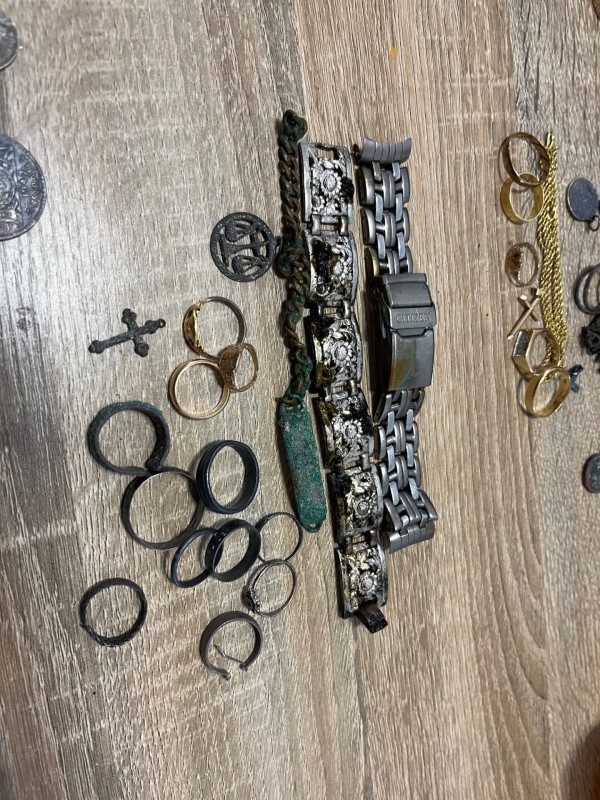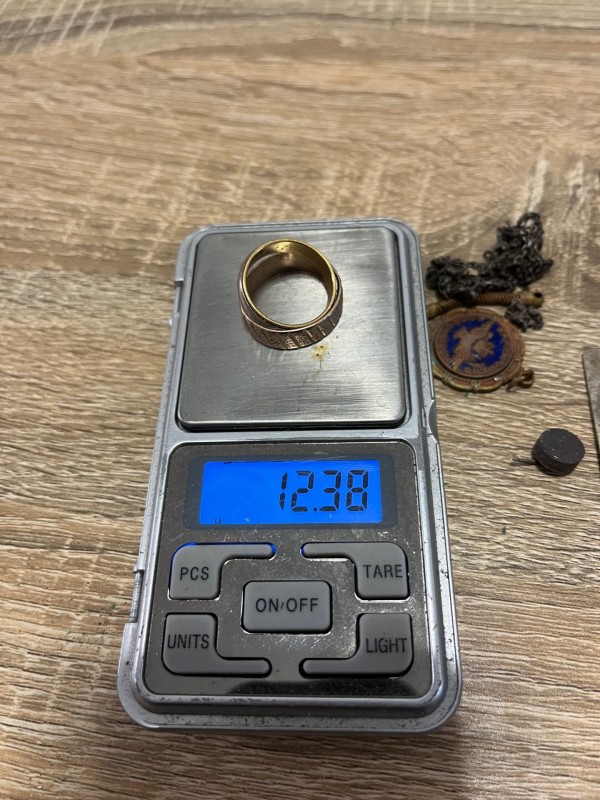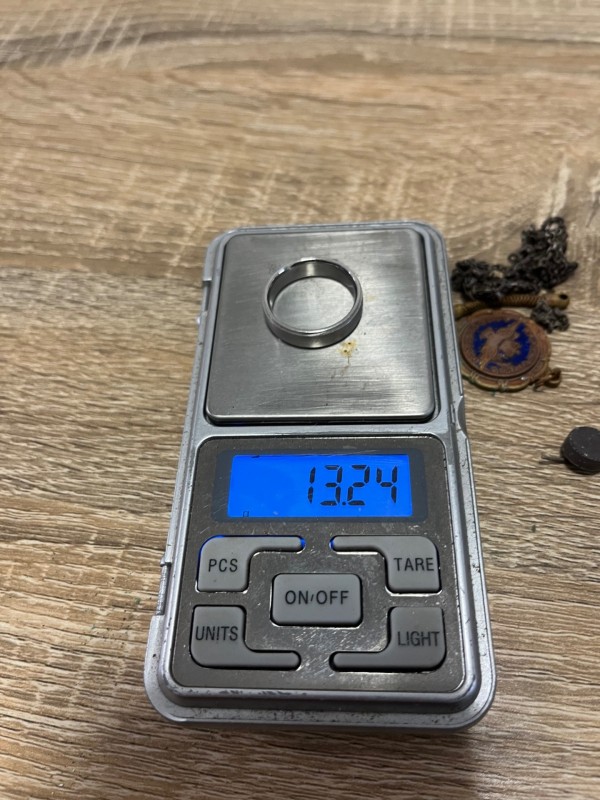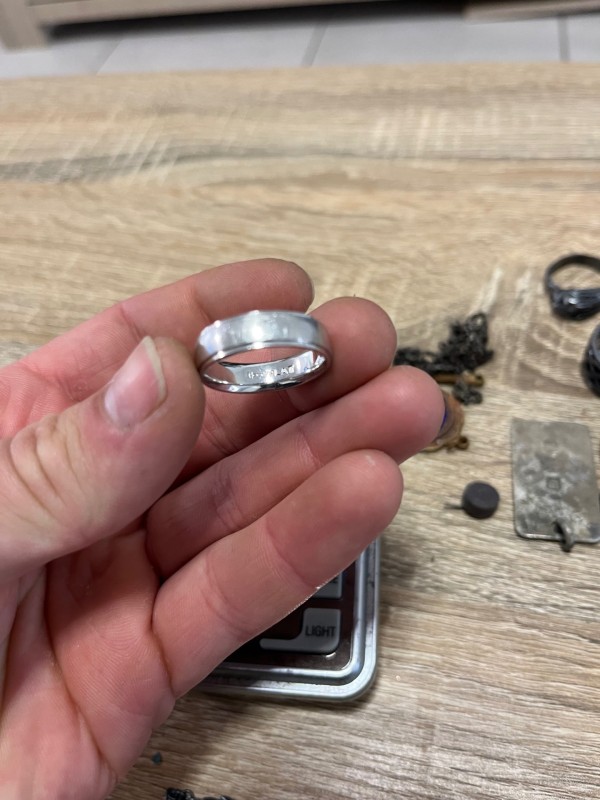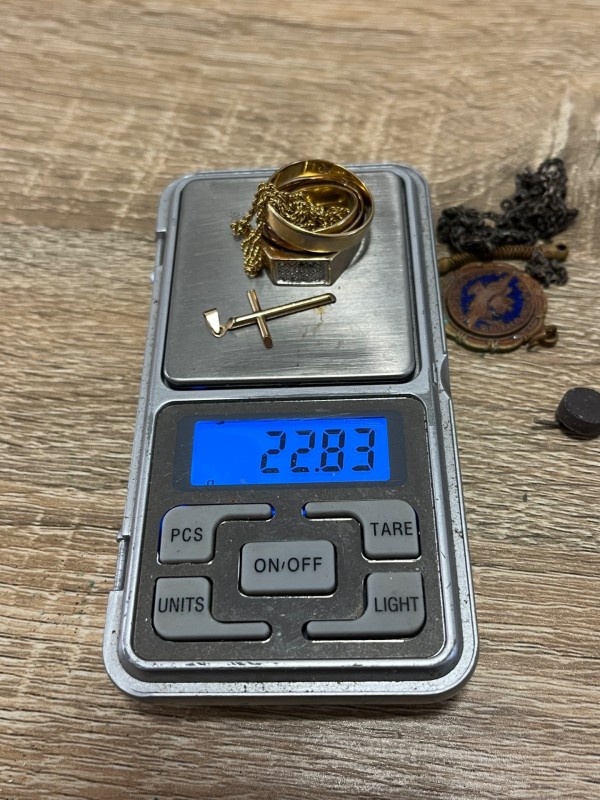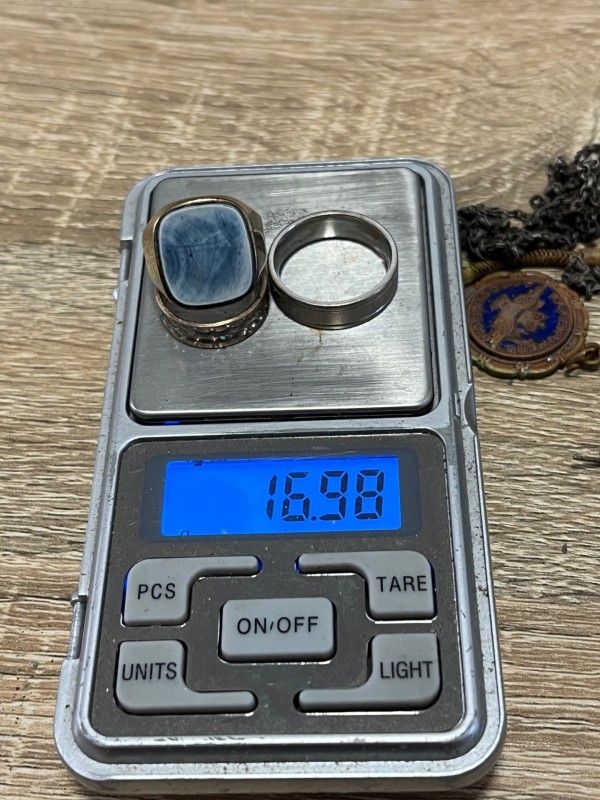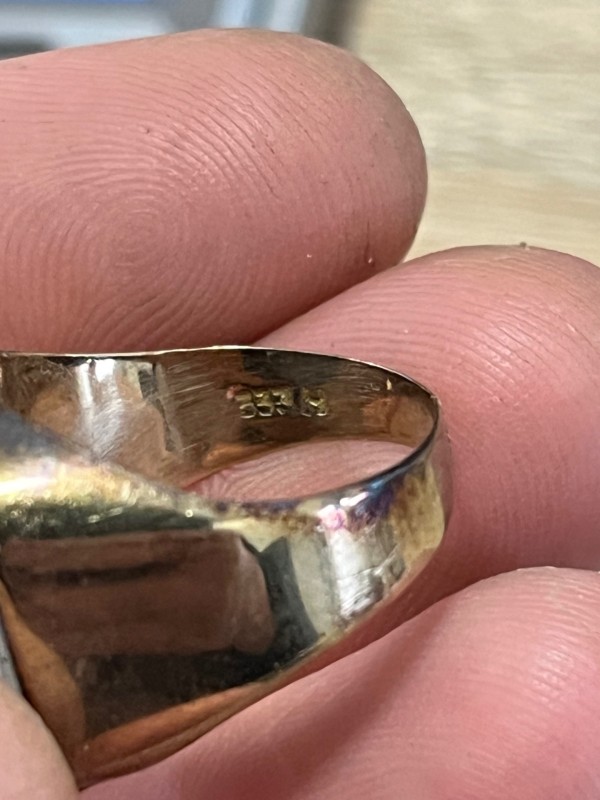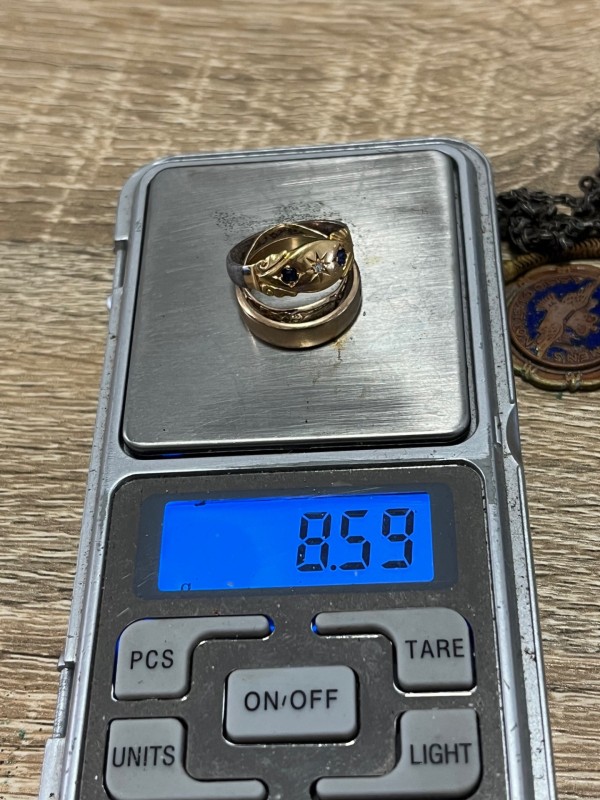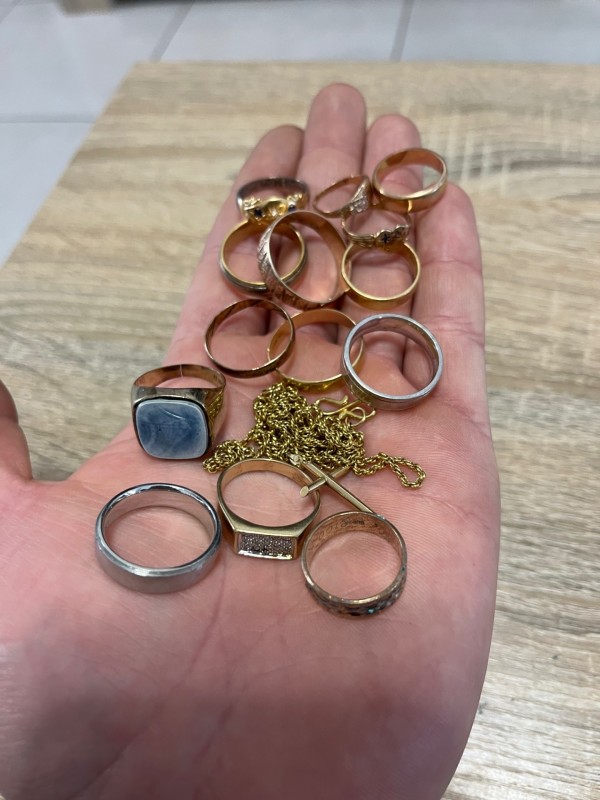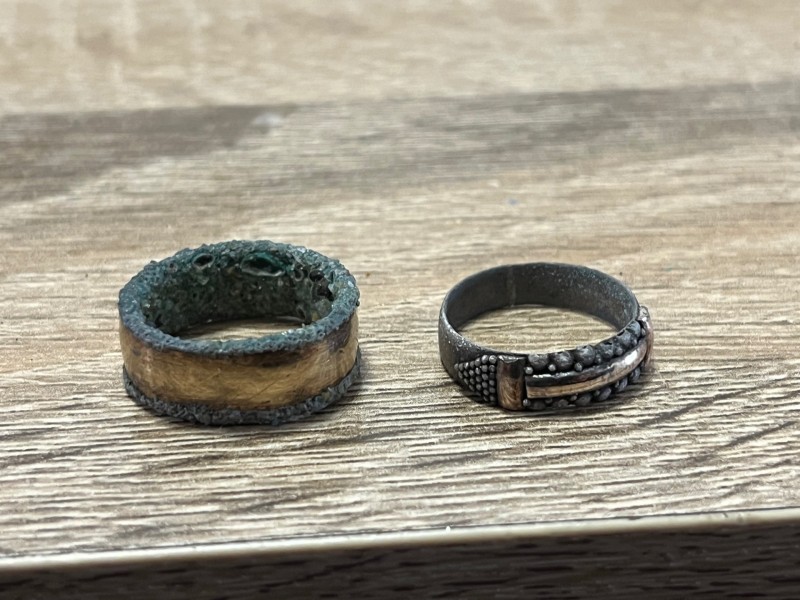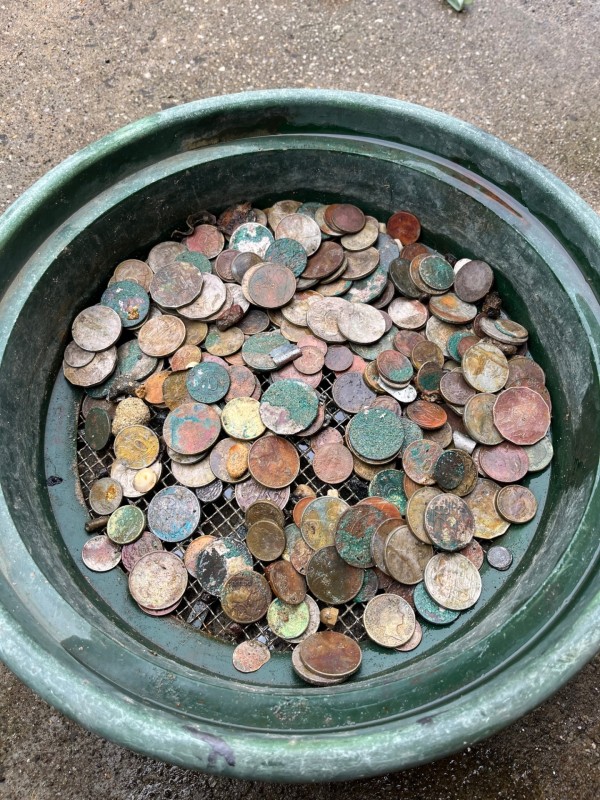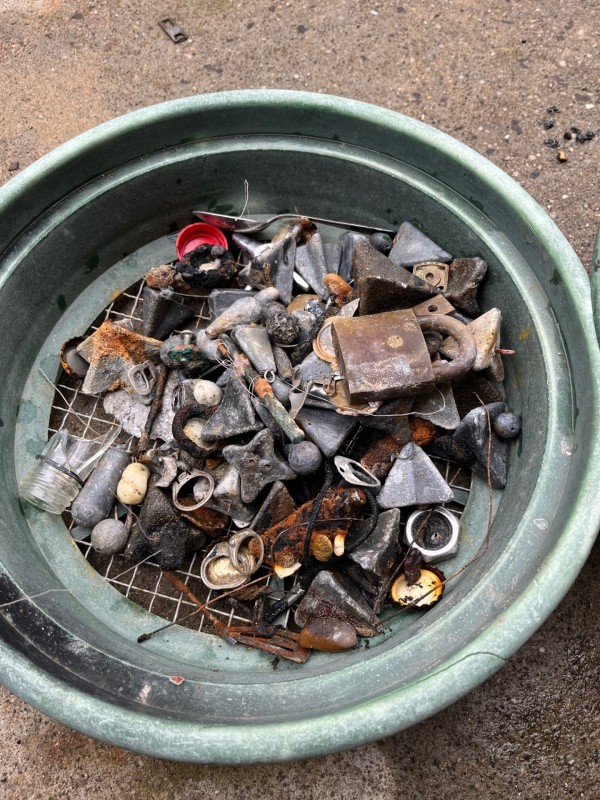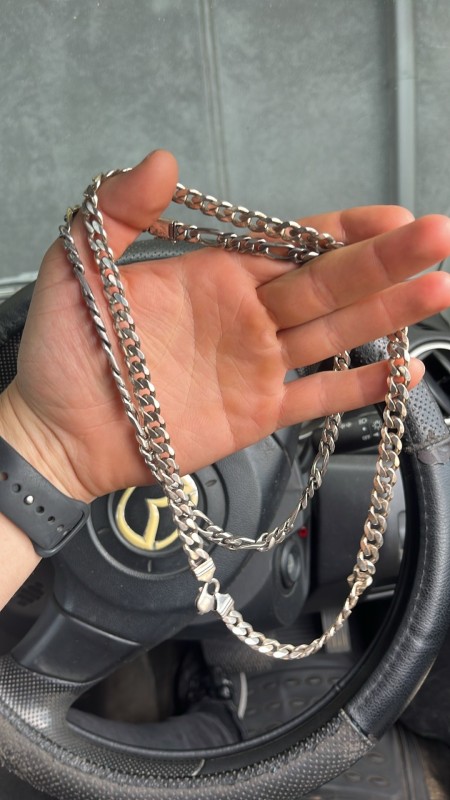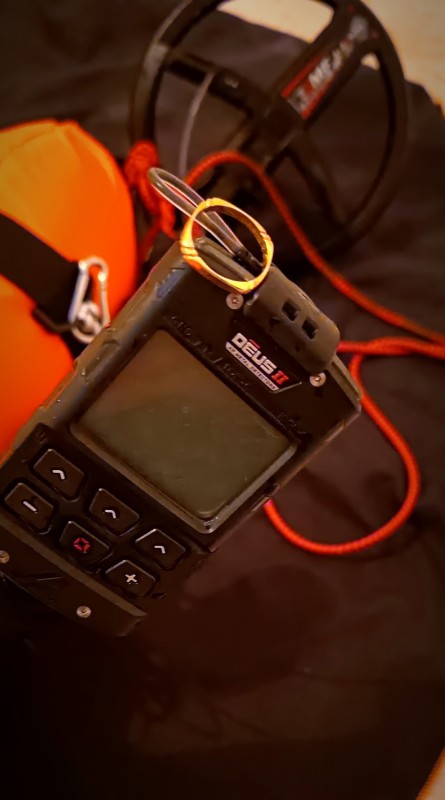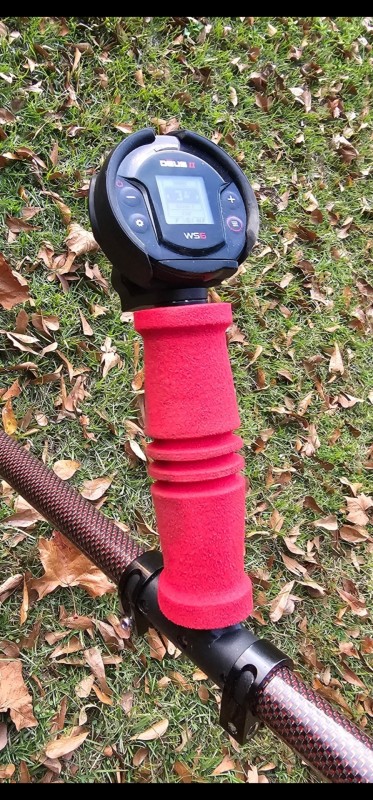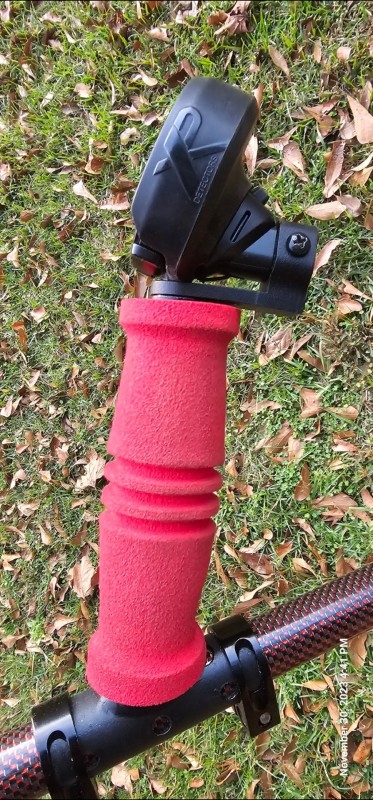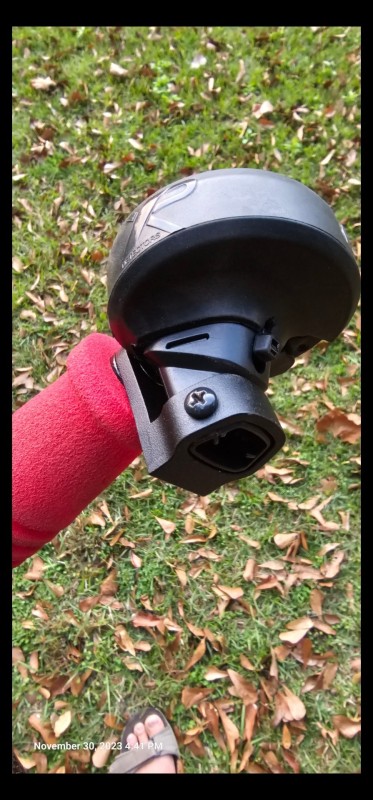Leaderboard
Popular Content
Showing content with the highest reputation on 12/08/2023 in all areas
-
A little slow on the relic forum this week so I thought it would be an opportunity to post a few recent finds. The pick could win a prize for being the most used and abused. Both of the business ends were broken off and worn to a nub and when it split into two seperate pieces it was wired back together.The knife age unknown came out of the mud in a spring. Another similar but much smaller knife came out of the ground in three pieces shown with a.dateless and badly worn seated quarter found just inches away. The knife after being repaired. A few more recents including another knife with wood handle a goat bell and broken iron locomotive and an excellent condition straight razor with bakelite handle? Nothing here that would have made the cover of Western And Eastern Treasures but fun stuff none the less.Deus 2 modified relic program 9 coil.14 points
-
5 points
-
Hi Gold Dozer, The key in my honest opinion for detectable gold is to search for "Free Milling, Pocket type deposits." There isn't a ton of info on this, some USGS stuff and some random stuff you will find. You have to understand how gold nuggets are formed in the veins and search for those type of deposits. Also, like other mentioned, the placer info on these areas will also help, letting you know if nuggets or sizeable gold has been found in the past. I used to love talking on the phone and emailing Jim Straight. Jim loved to talk about true geology behind where gold comes from. Many of his book, hard to find now, were a good research. I believe I still have a few copies of his books, but not the NuggetShooter Bible, which was one, if not the best books written. Out here in the Southwest, I have found some great nugget patches in unknown, not documented areas. These are normally on the outskirts of known gold mining districts. Like anything, research, exploring (boots on the ground), persistence and a bit of luck all help. Keep in mind, a good gold detector, VLF or PI will be a big help.5 points
-
Definitely not my experience in the field or an air test with the MI6 connected to the D2 remote (where you can further adjust/increase its sensitivity vs. standalone) vs the Nokta (vs. the Mi6 standalone air test as clumsily demonstrated in the video (what was the MI6 standalone sensitivity setting?? FWIW The MI6 standalone default sensitivity setting is medium vs. high). I did a test with small gold (0.8g) and the MI6 with audio via the D2 remote and also standalone vs. the Nokta and you can see the visual results below as I slowly slid the pointer down the ruler towards the target. The tip corresponds to the height above the gold target where the pointer first sounded off and both pointers were at max sensitivity. 0.8g Gold Target Nokta Accupoint detection audible at approximately the 2mm mark (target was directly below the tip at the edge of the ruler which extends a couple mm beyond the zero mm marking). XP MI6 connected to the D2 remote audible at about the 27.5 mm mark. MI6 Standalone at "High" sensitivity audible at about the 22mm mark. Both pointers are tip vs. side sensitive. The MI6 appears to be less sensitive standalone vs. connected to the remote where you can further boost sensitivity above the MI6 standalone "high" sensitivity setting. In my field experience the MI6 and Carrot are more sensitive in ground than the Nokta Accupoint on all types of targets (large, small, high conductivity, low conductivity, ferrous and non-ferrous). Love the Nokta's ergnomics and the ferrous rejection mostly works on big iron (not so much on small iron) provided you are really close and get the orientation just right. I've had it fail to recognize big iron as ferrous with the tip actually touching the ferrous target until I moved it to a specific position on the target. It's a functional pinpointer with great ergonomics, mediocre sensitivity (in my first hand field experience), and finicky ferrous detection. The ergonomics and ferrous detection (despite its quirks and mediocre performance) and wireless features make it my preferred backup to the MI6 for now vs the Carrot and even the Quest Xpointer Max which has its own set of different quirks. I can see many detectorists being just fine with this as their only pinpointer. Those who already own a more sensitive pointer might end up being disappointed. I guess my only lingering question is whether there is high variability in sensitivity unit-to-unit with the Accupoint based on the myriad of perspectives here and elsewhere on Accupoint sensitivity. FWIW5 points
-
The Sensitivity setting only adjusts the gain of the signal as sensed by the receive coil it has no impact on the power/strength of the magnetic field transmitted into the ground by the transmit coil. This received signal is a combination of ground noise, EMI, and target signal. Hence, increasing sensitivity increases all of the above (i.e., target signal + noise (EMI and Ground Noise)) but it does not increase or decrease them by equal amounts. If your target signal to noise ratio is high, then increasing sensitivity generally increases detection depth. If your noise floor is relatively high compared to your target signal (i.e., a low signal to noise ratio) and is continuously present due to EMI and EMI noise cancel is not effective, then lowering sensitivity from say 20 to 15 may decrease continuous but lower amplitude EMI noise to a sufficiently low audible level such that you can retain the SMF mode or operating frequency you want for your desired target objectives while still being able to detect targets at reasonable depths (though there will be some loss in detection depth). If this doesn't work. You can potentially mitigate EMI further by adjusting SMF mode or switching to single frequency and adjusting frequency or by adjusting recovery speed or notching out specific target IDs where the noise is prevelant. The latter may be impractical as EMI can show up simultaneously across multiple target IDs or affect specific target IDs of desirable targets. Ground noise typically manifests on the Nox as continuous noise with IDs in the -7 to -9 range and is generally mitigated or completely cancelled by doing a proper Ground balance first and foremost. If mineralization levels are high, using a coil with a smaller footprint helps to mitigate Ground feedback as does lowering transmit power. However, on the Nox, the user has no ability to independently adjust transmit power. Beach 2 does have reduced transmit power compared other modes to better handle black sand and high salinity conditions. In addition, the Beach modes can sense extreme changes in mineralization due to Black sand and will automatically reduce transmit power and provide an onscreen notification to the user (see p. 13 of the 900 user guide). Using tracking ground balance can help mitigate ground noise "spikes" when ground conditions are highly variable due to mineralization or moisture content variations in the field or due to black sand or salinity level variations in surf. Regarding the specific section you quoted above and to answer your question, ML is saying nothing explicit about transmit signal or ground noise in this sentence. ML is only pointing out the basic relationship between sensitivity and how it directly affects target signal strength and hence target detection depth as I described above. Transmit power does affect detection depth, but adjusting sensitivity has no impact on transmit power. And, if EMI noise is present, increasing sensitivity may be counter productive while decreasing sensitivity may be beneficial as both signal and noise are amplified or attenuated (though at different rates) as you raise or lower sensitivity. Regarding what is being adjusted here, see my previous discussion on how the sensitivity adjustment affects the received target signal and the components of noise (ground noise abd EMI). EMI can affect target depth in the sense that it can overwhelm faint target signals at the limits of detection. There is also a phenomenon known as "silent" EMI that can interfere with the detectors' receiver in a manner that effective target signal sensitivity is reduced (with a commensurate reduction in effective depth performance) without audible noise being heard by the user. The reason ML states that the coil should be held away from the ground is to maximize the received EMI noise signal (and to also eliminate any ground noise effects) so the noise reduction channel scan is more effective in finding the receive channel with lowest detected EMI. If you have an idea of where the most prevelant source of noise is coming from, pointing your coil in that general direction during the noise cancel routine can be effective. In a previous post, you specifically quoted JCR who WAS referring to depth reductions in air vs. ground as a result of sensitivity adjustment reductions, in which you appeared to be confused by his mention of "the ground" as it relates to ground noise, so that's why I mentioned Air Tests previously (to clarify JCR's intent in the statement you quoted and that appeared to confuse you). HTH4 points
-
Too many tones can wear you down. Try simple 2 tones with a moderate break. I modified the High Conductor with no discrimination and tone break around 25 and 14khz works well in hot ground. If I get any falsing I usually slow my swing speed.4 points
-
Finding big gold: The simplest method that comes to mind is to explore placer areas close to lode mines. It's not going to be easy to find what you want, but persevere, and you might succeed. You may already know all this, but perhaps it will be of use. Ways to do this: 1) Examine modern gold claims as reported in places like https://thediggings.com. Open a map of a county that interest you. There are two kinds of claims shown: placer claims and lode claims. Poke around in this data looking for placers near lode deposits or something else that intrigues you. Use Google Earth and https://apps.nationalmap.gov/viewer/ to further refine your decision as to which area to explore in person. 2) Learn to download location data for historic mining areas from the USGS MRDS website: https://mrdata.usgs.gov/mrds/ You can overlay this information onto Google Earth. You can even use it to automatically mark locations on Google Earth so that when you click on these locations you can see more information about each mineral occurrence. Of course you can look for mentions of big nuggets (It's not that common but this actually worked for me once), or you can just look for areas with large placer gold production near lode deposits. 3) Mareen Johnson ( sometimes she uses her maiden name Sherlock) from the USGS has published a detailed description of placer gold deposits in Arizona and one for Nevada. Pay attention to where she got her info. It's in these publications somewhere. Last time I looked Mareen had not published a report for Utah. However, sources similar to those Mareen used may be available for Utah. Again, you are looking for mention of big nuggets or proximity of placer and lode deposits. 4) Recently, there have been several Detector/Prospector discussion of metal detecting dredging spoils. If you find something that the dredge discarded, it's going to be big. Of course you are going to prefer dredge fields near well known lode deposits. This is serious detective work. It's hard but may be profitable. Good luck!4 points
-
Nice knives, the seated probably gives you a guestimate on age of knives. Very cool.4 points
-
Hi Square…Why? .Nothing complex or technical….Purely a matter of personal preference.4 points
-
Try Keene boots. I’ve been using them for a long time. Very comfortable and hold up well. Any model without metal eyelets.3 points
-
3 points
-
Read this.... From https://www.detectorprospector.com/magazine/steves-guides/metal-detecting-and-prospecting-library/ Determining Where To Prospect For Nuggets 2017 Detector Prospector Forum article by Steve Herschbach How To Find Gold Metal Detecting & Panning by Charles Garrett. The basics of gold panning and metal detecting for gold nuggets. The author designed and built his own metal detectors, and Garrett Electronics was established in 1964 to manufacture and market his inventions. Handbook of Geophysical Prospecting Methods for the Alaskan Prospector A dated but still realistic summary of electronic devices used in the prospecting industry, aimed at the individual prospector. Geophysics For Mineral Exploration - A Manual For Prospectors A more recent publication that updates the one above, read both. Principal Gold Producing Districts of the United States 1968 USGS Professional Paper 610 by A. H. Koschmann and M. H. Bergendahl - A description of the geology, mining history, and production of the major gold-mining districts in 21 states. Placer Deposits of Alaska 1973 USGS Bulletin 1374 by Edward H. Cobb - An inventory of the placer mines and prospects of Alaska, their history and geologic setting. Metalliferous Lode Deposits of Alaska 1967 USGS Bulletin 1246 by Henry C. Berg and Edward H. Cobb - An inventory of the mines and prospects of Alaska and their geologic settings. Gold Prospecting Research Material for Alaska - Detailed prospecting resources for Alaska. Placer Gold Deposits of Arizona 1972 USGS Bulletin 1355 by Maureen G. Johnson - A catalog of location, geology, and production with lists of annotated references pertaining to the placer districts. Gold Placers and Placering in Arizona 1961 Arizona Bureau of Geology and Mineral Technology Bulletin 168 by Eldred D. Wilson Gold Districts of California 1970 California Division of Mines and Geology Bulletin 193 by William B. Clark. A relatively up-to-date and comprehensive guide to the gold deposits of California. The Tertiary Gravels of the Sierra Nevada of California 1911 USGS Professional Paper 73 by Waldemar Lindgren. A California geology classic. An account of the Tertiary formations of the Sierra Nevada Mountains and the origin and distribution of the gold-bearing (auriferous) gravels. Placer Gold in Southwestern Colorado 1960 by Ben H. Parker, Jr. - Excerpted from The Geology of the Gold Placers of Colorado, an unpublished doctoral dissertation of the Colorado School of Mines. Placer Gold Deposits of Nevada 1973 USGS Bulletin 1356 by Maureen G. Johnson - A catalog of location, geology, and production with lists of annotated references pertaining to the placer districts. Placer Gold Deposits of New Mexico 1972 USGS Bulletin 1348 by Maureen G. Johnson - A catalog of location, geology, and production with lists of annotated references pertaining to the placer districts. Placer Gold Deposits of Utah 1973 USGS Bulletin 1357 by Maureen G. Johnson - A catalog of location, geology, and production with lists of annotated references pertaining to the placer districts. Placer Examination Principles And Practice - 1969 BLM Technical Bulletin 4 by John H. Wells - The classic work on evaluating precious metal placer deposits. and....3 points
-
August 3 2002 Part One Up The Mountain To my surprise Bill Anderson was down at our camp at sunrise this morning and raring to get the long hike up the mountain started. Jacob and I were just making coffee and a little breakfast so Bill took a seat and joined us. It was clear to me that he was quite excited at the possibility of taking us on as partners in his proposed venture. I was still skeptical as to the ability of a small crew opening up an old mine tunnel in the middle of nowhere. I wasn’t sure just where Jacob stood. It would mean setting up a remote camp and hauling everything we needed up the mountain by hand and with no road to boot. Also, if any of the crew got in trouble it would be extremely difficult to get them back down the mountain for help, especially at night. Once again, when I brought up these concerns, Jacob seemed oblivious to them. Nothing much ever worried him as far as I could tell. As the sun was getting up over the trees we set out on our expedition. I took Bill aside and told him to set a slow pace because Jacob, although more than willing, was going to need to take his time and a few breaks as well. He would never admit it but I would never want to put him in a situation where he needed to ask us to slow down or stop. Bill understood and off we went with Bill leading the way at a slow and steady pace. We were all armed and of course Jacob took his trusty Thompson machine gun. He was rarely without it. TO BE CONTINUED .................3 points
-
I was out on a relic site yesterday and a thought popped into my head while wading through the various levels of decaying iron and other trash. Before the V1.0 update I had been running PWM audio because I thought it was much more expressive than Square audio. After V1.0 to present (V2.0) I have been running High SQR audio because I feel like it as expressive as PWM audio and it sounds better overall to my ears. However after long hours in areas of dense square nails, nail pieces, large iron, and burn pits I was getting some ear fatigue from all the falsing. I tried switching between a couple of programs from my usual Fast relic program to see if there any differences in the response to falsing sounds. I have a Deep HC based program in Pitch audio that I use for coin shooting, but it just made everything sound the same and I couldn't tell iron from non-ferrous from falses without checking the VID. I also have a Sensitive program in Full Tones with PWM audio and when I switched to that I noticed (or percieved) a difference in the falsing tones to the point that it was less fatiguing on my ears. I know we have discussed many ways to control falsing, but my quest here is do you prefer PWM or High SQR audio and why? 🤔2 points
-
My Buddy LuckyLarry’s little 9x5 coil has been on Fire, since the No-Where Patch Story! We both swing this little guy on our 6000’s. It’s very sensitive and has fair depth, for Northern Nevada’s shallow placers. But, in open Country it’s like Paddling your Life Boat in the middle of the Ocean. This hunt we started hitting the old Horse Dung Ridge Patch. It’s a Mile long Ridge that I never swung the entire length only stopping at its first patch. Larry, has some legs I’m about to the end of Horse Dung Ridge I pulled my second nugget about 10 ft apart. I turned to signal Larry of the fast two nuggets and head my way. He wasn’t on the ridge hunting the left side as I last seen him. I dug up 4 more nuggets very fast and looked for him again. I just caught a glimpse of him swinging over another Ridge way out of voice range! Back to digging nuggets and it seems like the next thing I know someone’s voice scares the hell out of me. It’s Larry with a big smile on his face. He said, looks like you found a patch as I settled down from the scare of being lost mind and tuned into my detectors sound for the next nugget. Larry, said he thinks he found a patch too and produced some very nice Quartz with ample showing of Gold. We walked back to my Buggy leaving my little patch to hunt the newly named Big Specimen Nugget Patch! Upon arrival he showed me the shallow hole that all the pieces came out of and we set off grinding the area. We swung that Ridge for 1 1/2 days with little joy! We know and inch is a Mile in this Hobby and haven’t giving up on this depleted Quartz Vein. Larry’s Specific Gravity weigh in for these 3 pieces was over 45 dwts. Mine on the left received and honorable mention 😂 But, when Two Lucky’s are on the hunt, finding that Needle in the Haystack is possible! Until the Next Hunt LuckyLundy2 points
-
Coming from Minelandia to the XP universe, I too prefer High SQR audio, but I'm going to do more experimenting. Since I ran PWM for close to a year to learn the sounds, I like it too. I set up identical Fast programs next to each other. One has High SQR audio and the other has PWM audio. I hope to be able to learn if one gives more target information than the other and if one falses less than the other with identical settings, coils, and swing speeds. I'll let you know what I find out. 😎2 points
-
LOL....Good Lord! $200 for those woven boots. No wonder they last...they better, Ha! Jim2 points
-
Doc, See you’re out North California or Southern Oregon. If I recall correctly The Hudson Bay Company was trading into southern Oregon in the early 1800’s. They may not have reached as far as the Salmon or Klamath drainages but their trade goods may have. Even earlier the Russians were trading out of Fort Ross. The Jed Smith party passed through the area in the 1830’s. Sea ports in the area provided goods to the miners in the 1850’s. I can’t determine the length of the upper knife but the dagger shape and double cutting edges may point to an old rigging knife. The old timers would often use them as a boot knife for protection as needed. You may have yourself a real historic find.2 points
-
2 points
-
Nice collection of knives and congrats on the seated quarter, well done! 😎2 points
-
Very nice finds, the first knife looks to be hand forged and the handle must have been wood. That has to be at least 200 years old on the knife. The smaller knife looks to be a skinner knife for small game, very common in the early to mid 1800's. Good luck on your next outing.2 points
-
Hi Square partly because I previously used the Equinox, and I now find that most aluminum will make a certain tone especially on a beach which helps dig a little less crap. For some reason it's not as good in soil now that I'm back to relic hunting. I've not noticed a heck of a lot of false signals that don't go mostly iron on a turn. From digging lots of iron previously I find I can trust the detector. I mitigate falsing mostly with sensitivity, audio response and bottle caps. It's always good to doubt yourself now and again however 🤔2 points
-
CPT, I mostly use High Square. And to be honest, I use it mostly because it is easier on the ears. I used to use PWM and I think PWM did a slightly better job of alerting to iron. It had that extra "fuzziness" over iron. But for me, the falsing in PWM does seem to fatigue my ears more so than High Square. So as far as performance in the iron goes, I figure it's a wash. PWM may alert me better but I tune it out after a while. High Square maybe not as good but I will stay focused longer. But in 6 months from now, I may be tired of listening to High Square and go back to PWM just to challenge my brain. 😄 My latest cure for falsing at these pounded sites where I am not worried about missing easy semi high conductors.....is to create a tone bin from 73 to 88 and set the volume of that bin to 0. Those iron masked mid conductors will jump out at you and those very high conductors will sound off nicely as well because they are not competing with the falsing. You just have to accept the fact that you could miss some nice targets in the 73-88 range and not care about it. I'll go after those on another hunt using a different approach. But if you want to hunt for a while in those iron choked sites without the falsing, give it a try.2 points
-
I have my Deus2 set-up like the sounds on an Equinox..........so whatever that is? Have adjusted the Hz of the high tones and raised it, also lowered the Hz of the iron tones.2 points
-
Well I have to get my two cents in. $99.95 Doc's Nugget Stalker Pick. plus s&h Made in the U.S.A. Made with sturdy forged metal. The wide blade with curved edges moves dirt quickly and efficiently. The wide blade is sharp, it will cut through bushes and brush with ease. Comes with a 1 inch X 1/2 inch approx. Super Magnet. The magnet is screwed to the top and can be removed. The handle is 24 inches long. The width of the wide blade is 5.5 inches, and from the point to the edge of the wide blade is 11 inches. The handle is made of Ash and has a little larger area at the end of the handle for a better grip. If you order the Nugget Stalker pick with a magnet, the magnet will be mounted with a screw on the top of the blade between the point and the wide blade. Or you can request we send the magnet loose so you can decide where to mount it. Doc's Nugget Stalker® Brand Gold Pick, the only pick for Metal Detecting you'll ever need. - Doc's Place (docsdetecting.com) Doc2 points
-
Placer Gold Deposits of Utah___________ GEOLOGICAL SURVEY BULLETIN 1357 All of the gold that I saw mentioned was fine. https://www.detectorprospector.com/files/file/131-placer-gold-deposits-of-utah/ I didn't read the whole report I just skimmed thru it.2 points
-
Dankowski's post on his beach settings that you describe is on page 13 of his Manticore forum. I discovered it the first week of January when I bought my detector and never looked back. Been using upper 4 and lower 0 with Prospecting Audio and All Metal ever since I turned the machine on the first time. I figured if Dankowski uses it, it's good enough for me. Only difference for me is that I cut the ferrous volume down to half of what my regular volume is and I run the sensitivity at around 21-22 for my beach. Both these adjustments help cut down on ear fatigue during a long hunt. If you're hunting an area with a lot of iron, the the iron grunts along with the high sensitivity chatter can be fatiguing to the ears after a while. I do however bump up the sensitivity to 25-26 temporarily when I come across a deep weak signal to help identify it as "dig" or "no dig". This does make the target easier to identify after crossing it in all directions. Then I go back to my 21-22 sensitivity. The Prospecting Audio has some very telling differences in it's target hit sounds depending on metal type and shape and depth. For instance, can slaw and foil in the 12 TID range and under sounds different than a gold ring in the same range even though both may show as right on the non-ferrous center line. I have a lot of slaw on one area of beach that I hit regularly and this little nuance in the sound helps tremendously once you learn it and trust it to be can slaw or foil "no dig". Took me a while to pass those hits up without digging, but I learned after digging so many pieces of slaw in my first month or so with the detector. However, pull tabs in the 29-32 range sound just as good as a dig target and are usually a dot right on the center line like a good target. If I'm in an area as usual with a lot of pull tabs, anything 29-32 I don't dig anymore. I have dug way too many pull tabs in an infested area to waste time digging them all thinking "this one may be the gold....dig it"! Those who haven't given Prospecting Audio a good try because it's different than what you're used to should really give it a good shot. It has so many subtle differences in hit sounds that you learn with a little time and experience that help identify a target.2 points
-
You can repair it as good as new with this IPS Adhesives Weld-On 16 Acrylic Plastic Cement, Solvent Based Adhesive Clear 5 oz Tube (ellsworth.com) Weldon Acrylic Glue (SCIGRIP 16) is especially formulated to bond acrylic (poly-methyl methacrylate) plastics. It can also be used for bonding styrene, butyrate, PVC, ABS and polycarbonate, as well as other plastics and porous surfaces. SCIGRIP 16 is a very high strength, clear, medium bodied, fast curing, solvent-type acrylic cement. Applied to cast, molded or extruded acrylics, it will affect initial bonds very quickly so some parts may be handled within a few minutes. Bond strength continues to develop very rapidly reaching a substantial level and forming strong joints within hours. This product may be thinned with SCIGRIP 3 by approximately 10%. Initial bond forms very quickly so some parts may be handled within a few minutes of application. Joints are water and weather resistant and will generally have similar physical and chemical properties to acrylic plastic. This stuff is absolutely awesome, not a typical glue by any means. It's used for double glazed acrylic windows for campervans and caravans to hold the two panes together, and is perfectly clear but very strong.2 points
-
I’m typing on my phone at the moment so won’t go in to too much detail but I’m absolutely gobsmacked. In the last 2 weeks I’ve found 69 rings at this spot. I won’t count the 2 hunts 2 weeks ago because consecutive days sound better 🤣 but I’ll put the pic below anyway; during those 2 nights I got 2 massive chains as well. I sold the smaller one for 1.10 aud per gram, and kept the other one and wear it daily now. I went out for 4 days in a row this week. From 6pm-11pm roughly for our lowest tides of the year. It just so happens that all of the recent winds have uncovered a massive section of clay bed directly between 2 spots I’ve always had heaps of luck at. Well… the first night I think I beat my pb, at 19 rings! I couldn’t believe it. Then the next night, 17, then over the next 2 nights another 20 rings. Funny enough, while waiting for the tide to drop I actually did a different section about 50m away and got a nice chunky 18ct band right up on the wet sand. In all, 56 rings, a couple of thin chains, 7kg of coins and sinkers, and a dozen keys. I would love to go back tonight but I’m buggered, and it’s starting to get a bit sanded in now. It’s also about waist deep and bloody cold. Now as the tide comes back up from the .1 low it’ll probably sand back in within the next 2 weeks as it’s previously done. The highlights might have been the gold chain and plat ring. I recently posted about the heaviest platinum ring I’ve found, being 15 grams and only found 100 meters away. Well this one is 13 grams, so I’m really happy with that. The chain hallmark has worn off but it looks like 22ct to me. Very thin and weights 7 grams. It actually had the cross pendant and a small gold signet ring on the chain as well, which is how I found it. It was also a surface target and I just barely saw it through the water sitting on the clay. also got a couple of 8-10 gram gold rings and my first 8ct ring. All up, 60 grams of gold, 189g silver (not including 2 weeks ago) and 13g plat. There’s also 2 half gold half silver I didn’t weigh. unfortunately, though I don’t mind, another detectorist friend also got to the spot a day before me and got 6 gold rings! Oh well 🤣 I’m still stoked. I only knew this as I saw him there last night and had a chat. He also got a bunch of rings last night and my partner got half a dozen on the shore on the first night. This puts my total rings for this year at 208. I’m a month ahead of last years 200 tally. enjoy the pics below! top left/right is day 1/2 bottom left/right is day 3/41 point
-
After the usual three days of weather observation and skipping scouting to confirm bottom conditions, this morning a window of about 3 hours presented itself before new wave energy made the spot where I thought I was done in October impassable... The few remaining signals, are items I have not picked up due to the lack of a net bag, but whenever I find myself on a target I know, I am able at that point to isolate areas where I have already passed in other previous sessions. That said, the day started badly with leaks at the 'air regulator and missing pressure in the tank. I manage to hold the bottom for just 45 minutes and am forced out on emergency for low air. I reach the car by traveling about 400meters with the harness and ballast on and change the cylinder. At that point I screw the first stage back on and open the 'air tap on the new cylinder and hear the unmistakable venting between the tap and the first stage. I unscrew again and notice that the O-ring has blown out. I find it intact on the ground and reassemble correctly. After all the time wasted, I wonder at that point if I should leave the beach, since no interesting targets have come to light and I think I finished already in this spot some time ago. I decide to persevere and although I don't feel like walking with all that weight, I return to shore and dive. A strong current pushed me to the side just before I went out to change my tank, and this time I follow it, letting it carry me slowly toward deeper water. At that point a signal among the 40 draws my attention and a moment later I find this unusual ring in my hands.... Lesson of the day? Insistence can pay off even when it seems over....1 point
-
I'm starting into my 5th year as a prospector but it hasn't been much more than a year that I've started leaning heavy into detecting. Here in Utah I've found gold in quite a few places using a pan and sluice but the overwhelming large majority has been flour gold. I've heard many times "Do your research before exploring an area". I have taken this serious and have improved on my ability to do research and learn more about places I have gone before physically exploring the area. I've found USGS as a very useful tool for finding new places, takes some persistence to know how to get the information out of there as that isn't the most intuitive tool but I have found some really interesting data in there. I don't struggle with finding areas where gold has been found anymore but what I do struggle with is finding information on weather the gold found in that area was large enough to be detectable. I am continuing to learn and am beginning to understand that associated rocks can be clues on potential size of the gold that could be found, but I can't think of any instance I've seen any information on the size of the gold found. Maybe this is just a Utah thing? Any hints or clues on how I could find this information would be appreciated.1 point
-
I would also mention that this is not a true "Mixed Mode" in that its only in the audio circuit. A true "Mixed Mode" means that both detection circuits respond to all targets. With the Manti, targets are competing for "sound." There is a considerable depth boost though. cjc1 point
-
Yes, it's a solvent cement, similar to how plumbers use solvent cements to fuse PVC pipes together, far superior to glues that just bond things together, solvent cements soften and dissolve the plastic material, changing its molecular structure. then they can fuse together which is why they can use used for high pressure water pipes. It just has to be compatible with the plastic which you can tell that pretty easily when using it, but that Whites plastic looks just the right stuff. Handy stuff to have in your toolbox.1 point
-
Yer makin' me seasick , th' good kind though I miss that sh ,, stuff but still have seal costumes and a couple accessories ...mostly to wade in streams with quick bottom dips to check on beeps these days.. Only did 1 beach this summer , might do some in the cold but staying up on dry , the sea be 42 today , maybe back in younger days...and besides the Cap is in Nebraska and he took the boat , sold it for a camparrr ! 😫 I figured you'd know about the rip , just added it in case a lub decided to try driftin' like that. For you ,, just don't follow them mermaids ! ooooie .1 point
-
"I guess my only lingering question is whether there is high variability in sensitivity unit-to-unit with the Accupoint based on the myriad of perspectives here and elsewhere on Accupoint sensitivity." I think this may be the case. I had to warranty the accupoint that came with my pro pack and, although I never checked with a ruler, I noticed the replacement seemed to be less sensitive than the original one, which isn't a bad thing honestly, as level 6 on the first one was too sensitive, so I settled on level 5.1 point
-
Hey Skull ! I've been thinking about your hunt. Maybe you should let the currents take you around more often? It almost seems to have decided you were a treasure and was sorting you into the proper spot with the rest of the treasure. Ya never know about the sea.🥸 PLUS one more trick in the tool box ! arrrrr Just read your last response . An OZ ? THAT'S what I'm talkin' 'bout ! Might want to disregard the currents when there's a rip tide .1 point
-
1 point
-
@Chase Goldman Excellent comparison test, thanks!1 point
-
1 point
-
1 point
-
Thank you Simon, I have a replacement cover on its way to me but I appreciate the information. This acrylic glue looks impressive! George.1 point
-
Those are great finds that bring real history to hand. The smaller knife may also have been used to cut the patches for the old timer's muzzle loaded rifle. I have a pile of Iron relics found recently to clean & display. I will post some of them before too long.1 point
-
1 point
-
Ya I jumped right on to Prospecting audio with the NOX for the detail it gives and what a great signal balancing trainer it is. changes in sens, speed and bias are very telling. It teaches you how to get your responses to stand out. Re/ foils. This is another great thing about the Manti, it does let you hear the solidity of targets and these light flecks of foil just sound weak. I do think that Toms settings will allow more juice than 22 / though but this is a land setting. Jacked way up. For tough, fast salt though 22 seems to be a good setting for sure in simple Beach Wet. Thanks for your insight, Brad exactly why I put the post up--to see how others are liking and using this system. cjc1 point
-
I am going to cash in my gold this year. I did make a post earlier this year about that speed controller. https://www.facebook.com/photo/?fbid=10160371624754476&set=pcb.5643504189155441 point
-
I brought 2 coils to the beach, using the m8 at certain places that I think has higher possibilities for hunting fine jewelry especially necklaces and m11 for general hunting.. so far no necklaces found with m8 haha.. 😏1 point
-
I think Gerry at https://gerrysdetectors.com/ may have a good used one for sale, he is a multi line dealer.1 point
-
1 point
-
It is said “ Nothing Last Forever “ but tomorrow if I so wish I can order another Minelab detector and get my 15% Vet discount off of it . Minelab I may stand alone but I thank you for for a great product you have put out over the years. Chuck1 point
-
I'd say the Axiom sells better than people think, but not nearly so well as to put any fear in Minelab. The sad fact is the Axiom is being sold for twice the magic $2000 mark I think is needed to really put a fire under fast adoption of a PI alternative to VLF for people who can't afford to lay out more than twice what a high end VLF sells for. I am now looking to Nokta to fill that gap. Which answers the second question. No, VLF is no real alternative for serious gold prospectors. Everybody I know runs a Minelab GPX or GPZ or even older SD/GP models. If you have a good PI it is also good to have a great VLF for trashy areas. Now having said that, a Equinox/Deus 2/Legend can actually do very well in the right locations, typically trash laden tailing piles, where a PI just wears you out digging deep junk. But even in those areas a VLF will play out eventually, and then the hard work begins of using a PI to go after the deeper finds the VLFs leave behind.1 point




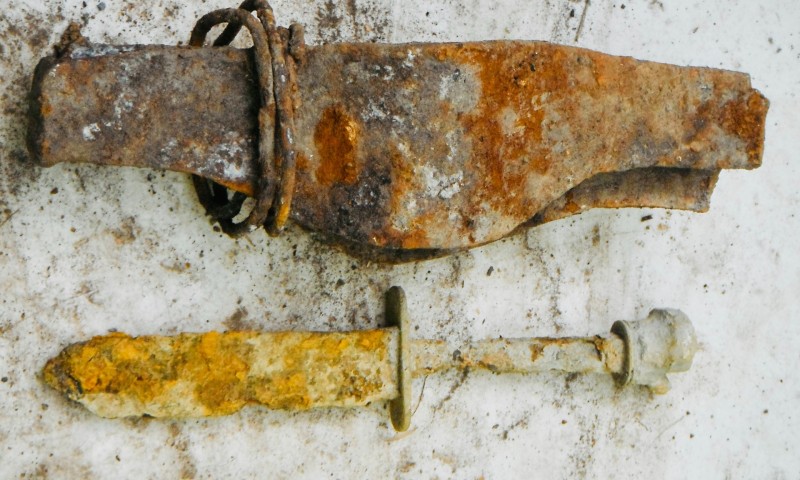
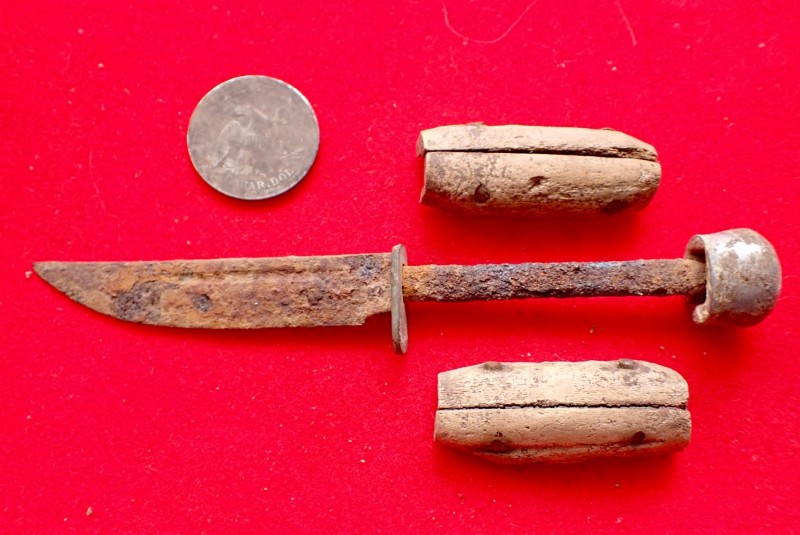
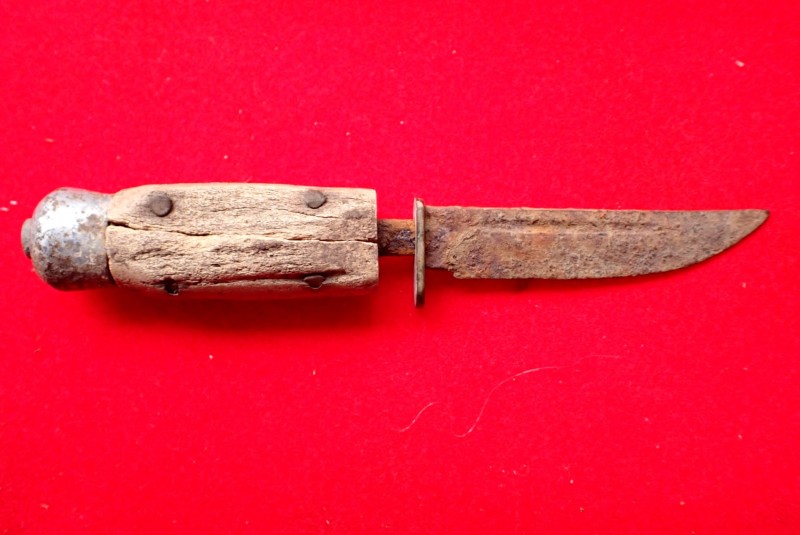
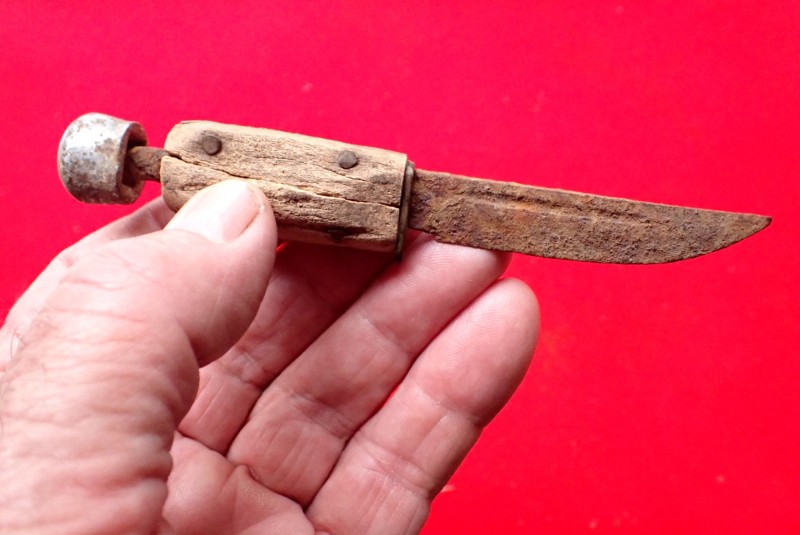
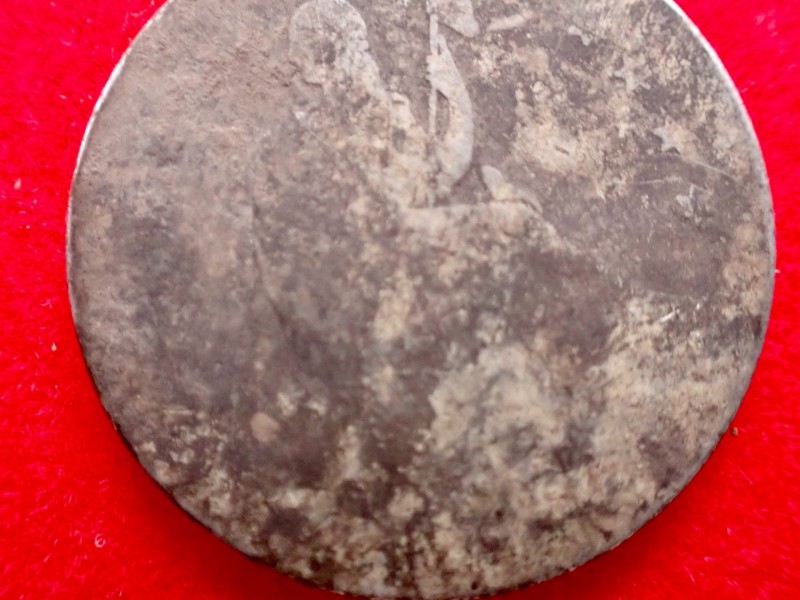
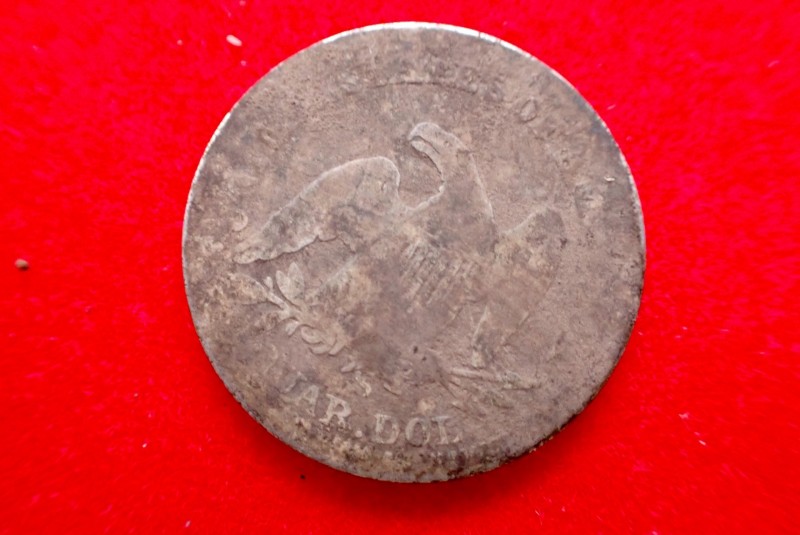
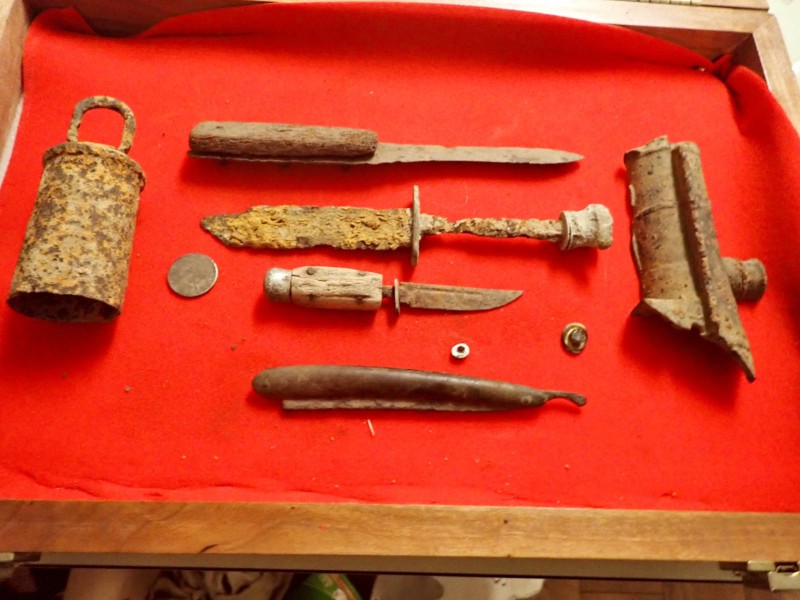
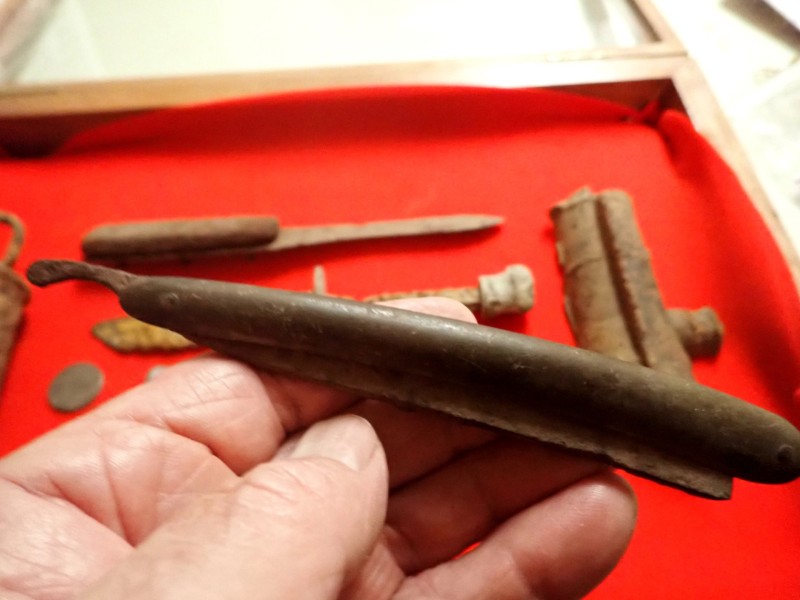
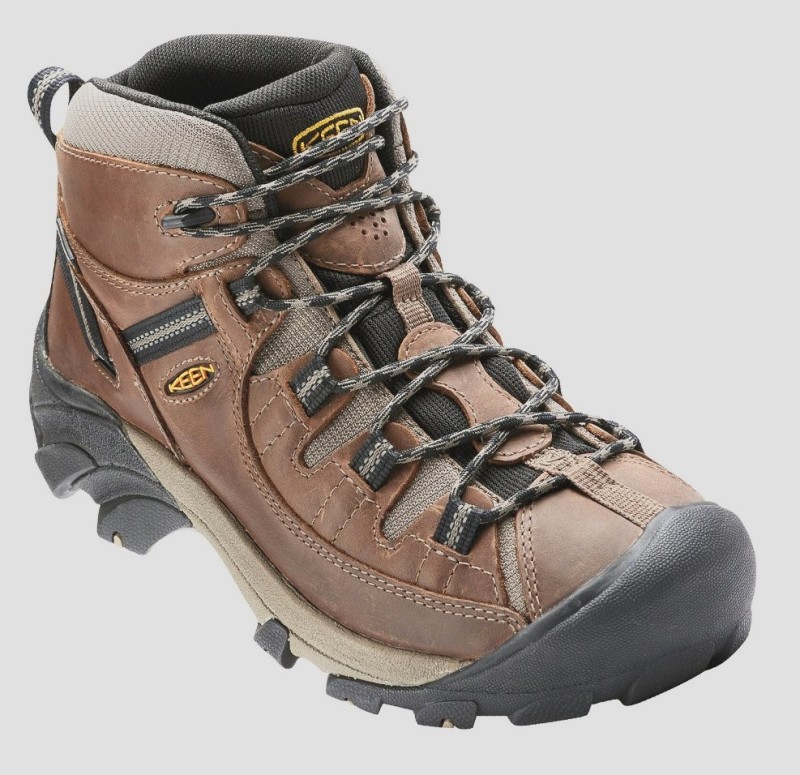

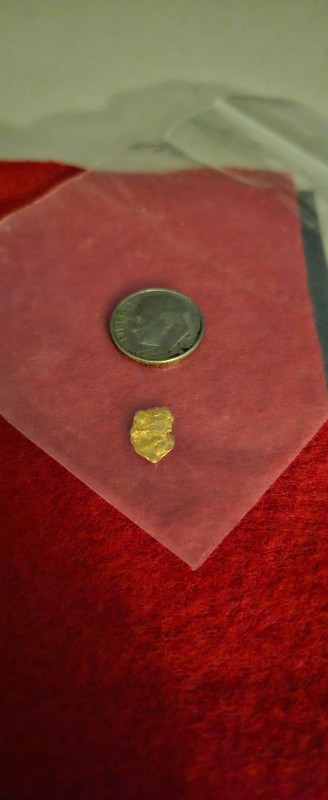
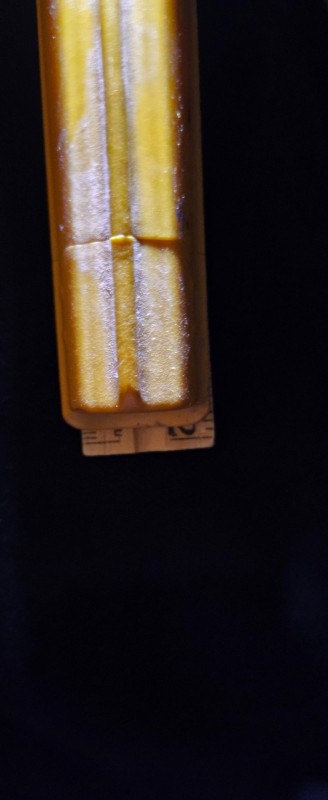
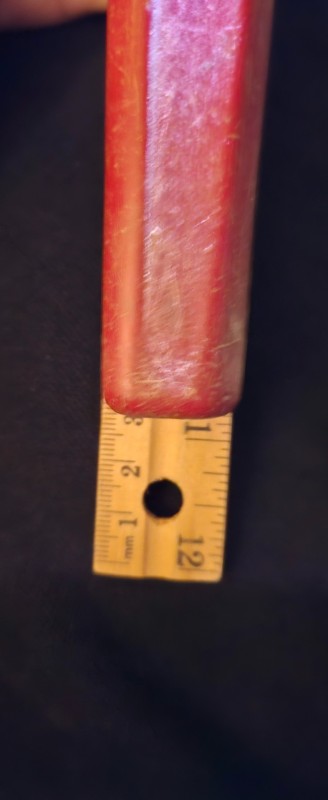
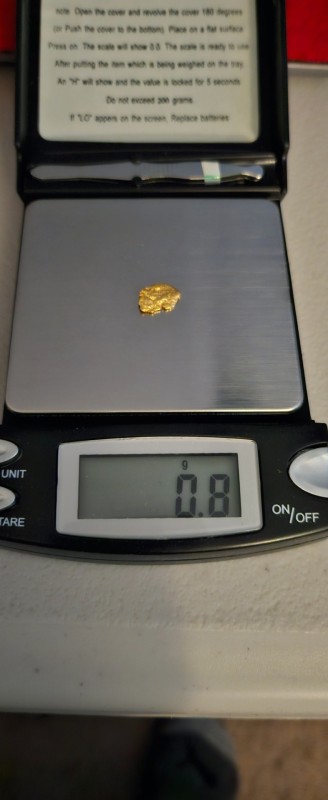
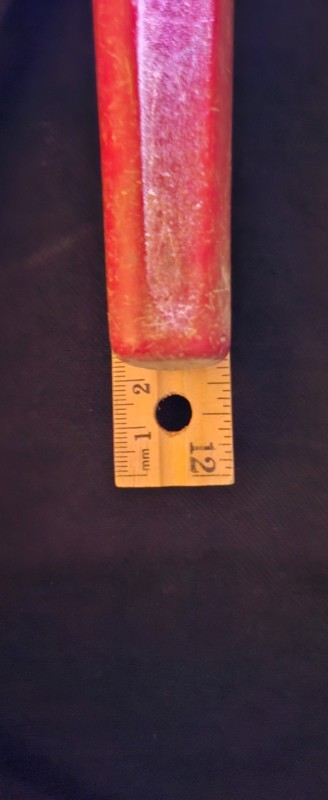
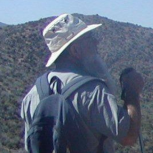
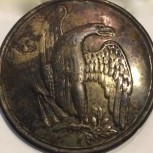

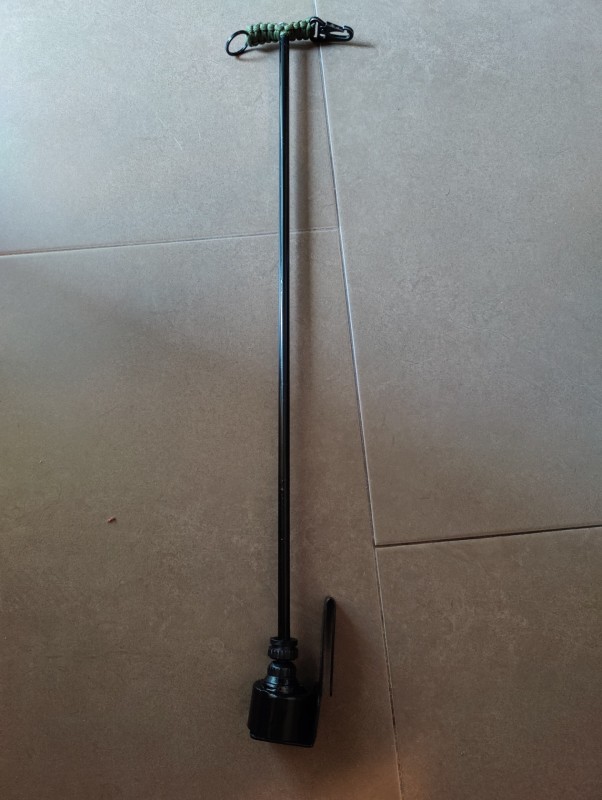
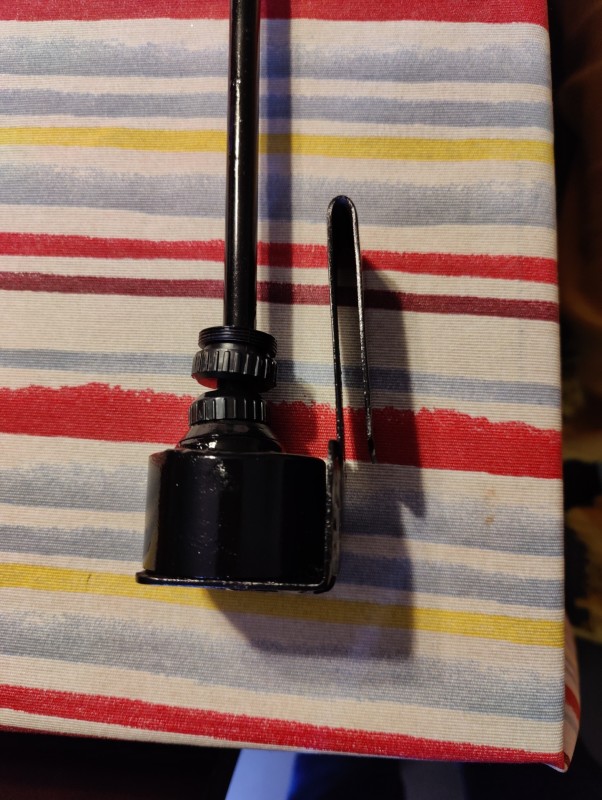
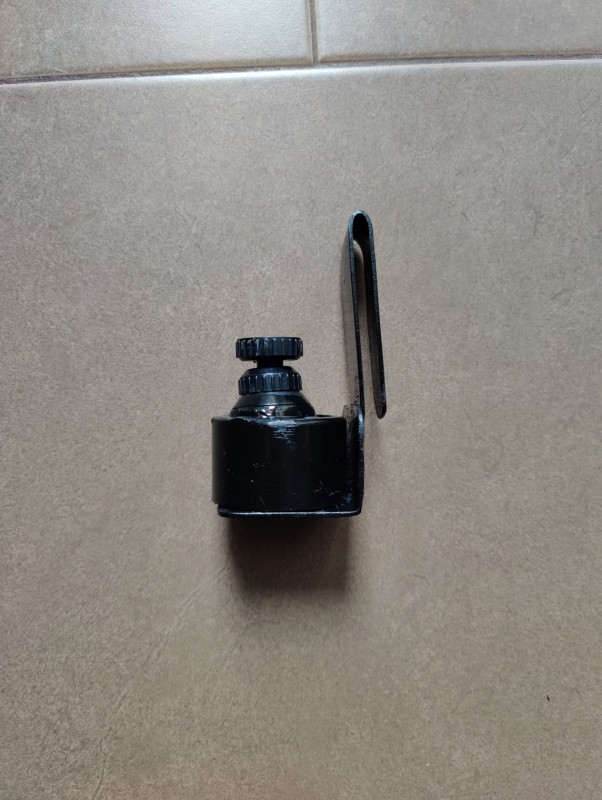


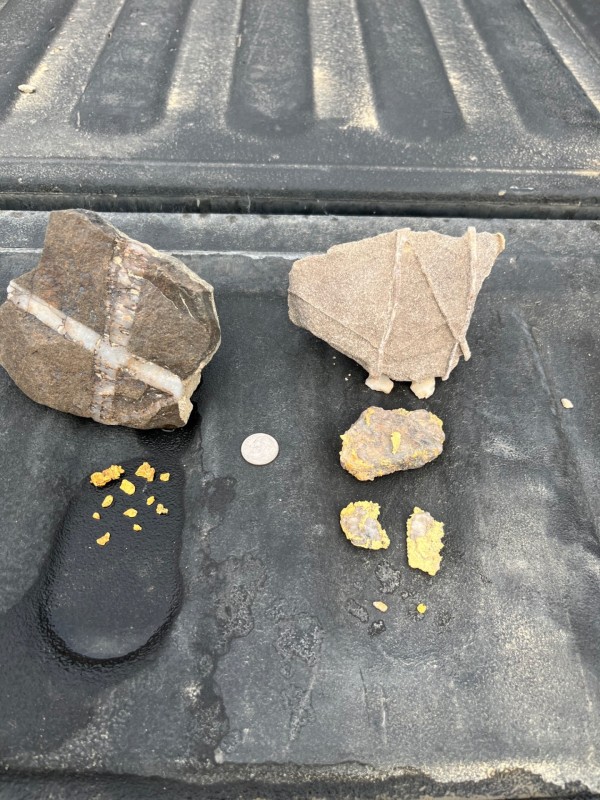
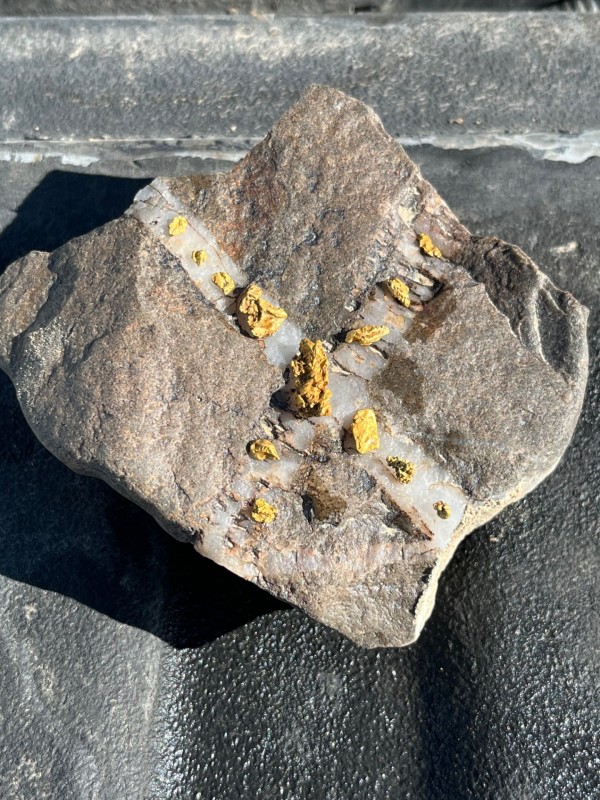
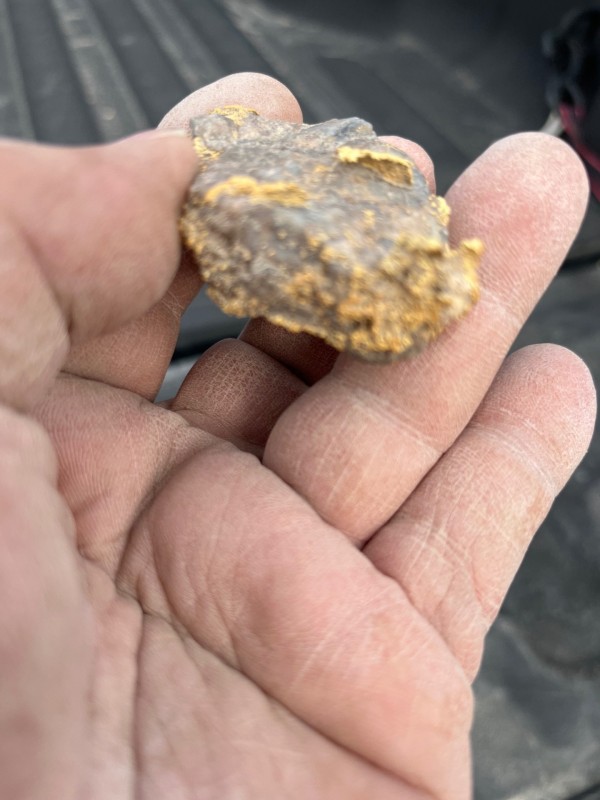
.thumb.jpg.ac5e8ee36e43bcab745dbc623fcf1874.jpg)
.thumb.jpg.95344db3aeef0a4c6c73420daa366191.jpg)
.thumb.jpg.8761b3d9b3da119b9e6d1912f67275ad.jpg)
